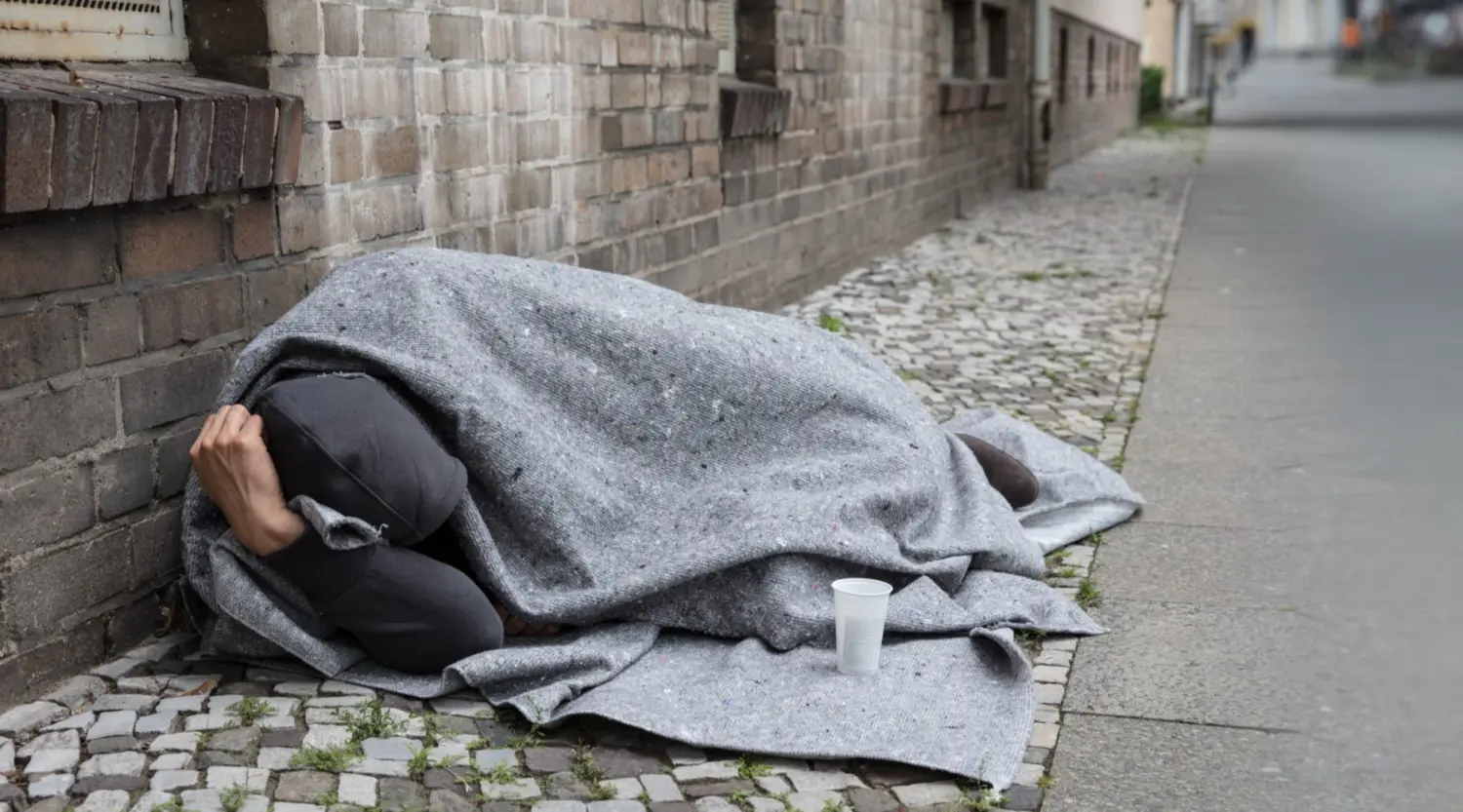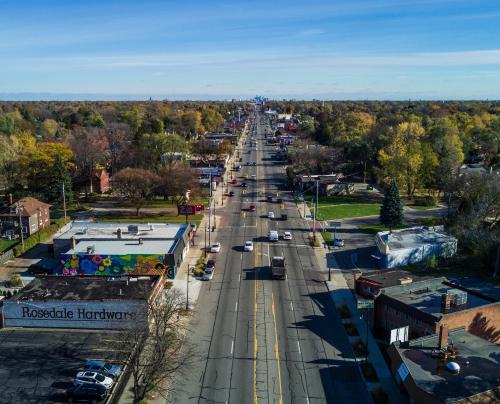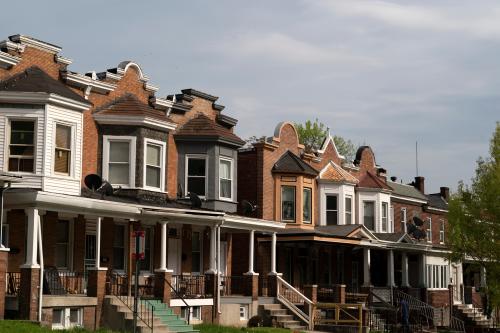In her dissent to the City of Grants Pass v. Johnson Supreme Court ruling late last month, Justice Sonia Sotomayor called out the reality that many local governments have already “made criminalization a frontline response to homelessness” and warned that the Court’s decision to further enable criminalization will lead to “a destabilizing cascade of harm.” The recent Grants Pass decision—which enables localities to arrest, ticket, and fine people for sleeping on public property, even if there is no housing or shelter available to them—runs the risk of further intertwining municipal homelessness policy with punitive enforcement, a move that could make both homelessness and crime worse nationwide.
Indeed, prior to Grants Pass, cities nationwide, from New York to Tallahassee, Fla., to Albuquerque, NM were increasingly relying on police, the enforcement of quality-of-life offenses, and the clearance of tent encampments to manage homelessness. States too have increasingly embraced punitive approaches, with more than a dozen states introducing or passing laws that ban sleeping outside. Kentucky’s public safety legislation went even further by not only making public camping illegal statewide, but also prohibiting the use of state funds to provide permanent housing without preconditions (essentially blocking the implementation of the evidence-based “housing first” model) and allowing property owners to use force—even deadly force—against homeless individuals who don’t leave their property.
While Grants Pass is likely to inspire more of these punitive policies at the state and local levels, the decision itself doesn’t have to be destiny. There are numerous evidence-based and cost-effective approaches that address both homelessness and crime in the public realm, if there is the political will to see them through. This research brief provides an overview of these evidence-based approaches, explores the critical intersection between housing and public safety, and offers short-, medium-, and long-term recommendations for state and local governments to ensure a safe and humane public realm in the changing legal and political environments that cities and regions now find themselves in.
The dire need to address homelessness in the U.S. is clear: Between 2022 and 2023, the nation saw a 12% increase in homelessness and a 15% increase in major cities. Rather than embrace evidence-based approaches to address the growing challenge, however, some states and localities are doubling down on the criminalization of homelessness to quell rising fears of public disorder and crime, particularly in downtown business districts.
Homelessness and incarceration have long been linked in the U.S., with many people cycling between jails, prisons, and homelessness in an ineffective pattern that imposes dire costs to both human life and public resources. This cycle occurs on the “front end” of the justice system, due to the criminalization of low-level “survival” crimes, and on the “back end” of the justice system, due to the lack of support for returning citizens to access employment and housing related to the significant barriers that criminal records pose to successful reintegration. This has led to a situation in which, nationwide, formerly incarcerated people are nearly 10 times more likely to experience homelessness than the general population.
The linkage between homelessness and incarceration is often institutionalized in local policy, with a Community Solutions survey of mayors finding that 78% of respondents said police shape homelessness policy in their cities and 59% saying police enforce quality-of-life arrests against homeless people.
Treating all homeless people as criminals, however, is fundamentally out-of-step with the evidence, and can actually make both homelessness and crime worse. For people experiencing homelessness, the collateral consequences that stem from criminal charges—such as loss of employment, separation from families, and fines and fees—reduce how likely someone is to secure short-term as well as permanent housing and increase their likelihood of being arrested in the future. In addition, debt from fines and fees associated with homelessness have been found to directly trigger incarceration, especially for young adults. Additionally, the criminalization of people living outside and in public spaces ignores the victimization that they often experience in the public realm, including physical and sexual assault and murder.
The costs to both community wellbeing and city budgets for criminalizing homelessness are steep. In New York, for instance, over half of all people released from prison move directly into the shelter system and are further isolated from family, employment, and a decent quality of life. In North Carolina, one-in-six people released from prison in 2023 went directly into unsheltered homelessness.
This cyclical churn between homelessness and incarceration is estimated to cost taxpayers $83,000 per person per year—far more costly than providing treatment and housing. A Florida-based study, for instance, found that the cost of repeatedly arresting 33 frequently homeless people is approximately $171,225 in Seminole County each year over a decade. In Los Angeles County, it costs an average of $548 per day to incarcerate a person in a mental health unit, compared to just $207 per day to provide housing and community treatment. In New York City, the daily cost for supportive housing is just $48 per person, compared to $1,414 per person for incarceration and $3,609 per person for hospitalization.
Rather than double down on costly and ineffective enforcement approaches, state and local leaders have the opportunity to embrace the evidence and implement more humane and evidence-based practices that get to the root of the challenges underlying homelessness—and, in so doing, increase public safety for all people.
It is well-known that the most effective long-term solution for homelessness is increasing the supply of housing, particularly affordable housing. What is often overlooked, however, is the connection between the supply of affordable housing and positive public safety outcomes more generally.
The cities and regions that have embraced the evidence on housing and homelessness have seen positive results. For instance, when the City of Houston and Harris County provided more than 25,000 homeless people with apartments and houses between 2011 and 2022, they saw a 64% reduction of homelessness during the same time period. After Milwaukee County implemented its housing-first program in 2015, its unsheltered homelessness population decreased by 92%. When the City and County of Denver implemented its Social Impact Bond (SIB) Program in 2016, which provided housing and support services to chronically homeless individuals, 77% of participants maintained stable housing after three years, the usage rates of the city’s detoxification services reduced by 65%, and arrests reduced by 40%. The significant cost savings associated with these reductions in public service usage offset the spending associated with supportive housing.
What is less well-known is the broad-based benefits that smart housing policy can have on another critical—and often conflated—issue facing localities: public safety. A strong body of evidence shows that when people are housed stably, they commit fewer survival crimes like theft, robbery, trespassing, loitering, and prostitution. Increasing access to rental housing in low-income neighborhoods has also been found to significantly reduce violent crime, and providing permanent housing subsidies is correlated with reduced rates of intimate partner violence.
While adoption of housing-based public safety policies has been relatively limited nationwide, the potential of the strategy is strong. Los Angeles’ Housing First strategy, for instance, reduced participants’ probability of arrest by 95%. In Baton Rouge, a 1% increase in homeownership between 2013 and 2017 resulted in a 4.5% decrease in assault, homicide, and robbery incidents. Efforts to reduce neighborhood foreclosures and vacancies have also been found to significantly reduce crime, as have grant programs to fund structural repairs for low-income homeowners. For example, one Philadelphia-based program that provided low-income homeowners with $20,000 to fund structural repairs to their homes contributed to a 21.9% decrease in homicides and a total crime reduction of 25%.
That being said, effective policies to increase the supply of housing can take years to bear fruit—and many local leaders are looking for answers to address both homelessness and crime now. In the next section, we present short-, medium-, and long-term steps that local lawmakers can take to implement thoughtful, well-balanced approaches for tackling housing effectively.
To aid states and localities seeking to address both homelessness and crime, this section presents an evidence-informed portfolio of approaches to tackle these issues comprehensively: a) in the long-run through expanding housing supply and addressing housing affordability, b) in the medium-run through programs that prevent homelessness by realigning counterproductive policies and interceding before eviction occurs, and c) in the short-run through targeted programs that support people who are currently homeless or experiencing housing crises.
Long-Term Stability: Increasing Housing Supply & Addressing Housing Affordability
- Increase housing supply of all kinds: High housing costs and a limited supply of affordable housing are the primary drivers of homelessness—more so than mental health concerns, substance use, or any other individual explanations. Zoning and land use restrictionsare examples of local governments’ dysfunctional fiscal and regulatory structures which disincentivize or prevent housing production and contribute to a widespread structural challenge in which the poorest people within cities cannot afford average asking rents for available apartments. To craft policy that addresses the causes of homelessness and crime, local governments should align their long-term housing and land use plans to increase the supply of all types of housing, remove barriers to affordability and shelter construction (such as single-family-only zoning, parking minimums, and parcel shape regulations), and adopt evidence-based “housing first” models. This approach is essential for increasing housing supply, both in the short- and long-term, and represents a critical way that local governments can expand housing supply even in an environment of scarce resources. Boston, as one example, has been leveraging inclusionary zoning policies and zoning variances, as well as using city-owned land for affordable housing, to expand its affordable housing supply.
Medium-Term: Prevent homelessness by strengthening tenant protections, interceding before eviction occurs, and realigning counterproductive policies
- Strengthen tenant protections to prevent homelessness and support vulnerable populations. For medium-term solutions, states and localities should adopt and scale the pandemic-era preventative measures that helped avoid a spike in homelessness at that time, including investments in emergency rental assistance, eviction defense and tenants’ rights, economic stimulus, and mitigation measures such as converting hotels into temporary housing. Alongside increasing these supports, local governments should identify and reform policies that unnecessarily cause homelessness, especially for vulnerable populations. Many landlords, for example, maintain “one-strike” or “zero tolerance” policies that automatically evict tenants following the perpetration of a crime—even if they were a victim of the crime. Local jurisdictions should end these policies and instead embrace programs like mediation, counsel during eviction proceedings, and tenant bills of rights which provide robust protections to renters and help them avoid ever entering the cycle of homelessness.
- Bolster housing and employment supports for those reentering from incarceration: To better address the pipeline between incarceration and homelessness, study after study shows that bolstering reentry supports—particularly access to housing and employment—is critical to reducing recidivism and homelessness, and also improves public safety. Effective policies include reducing barriers for returning citizens to enter public housing, providing tailored services for those most at risk for homelessness prior to release from incarceration (including workforce and housing supports), and explicitly addressing the unique needs of returning citizens in regional housing and homelessness plans, among other reforms. States like Michigan, for instance, are considering legislation that would prevent private landlords from discriminating against tenants based on arrest or conviction histories. All of these policies increase housing security for a group that is disproportionately likely to find itself facing housing crises, thereby preventing the homelessness cycle long before it begins.
- Identify and end policies that impose fines or fees and criminalize poverty and homelessness. In many jurisdictions, jails have become a revolving door for homeless individuals who are effectively criminalized for lacking shelter and basic sustenance. But criminalizing poverty does not address these underlying issues; it ultimately makes these issues worse, while also costing communities significantly more than they would have spent on housing and support systems. Rather than implement camping bans, sleeping bans, and similar policies, jurisdictions should repeal these measures and eliminate fines, fees, and other financial penalties imposed for such activities. Indeed, overwhelming research shows that levying fees and fines has destabilizing and inequitable effects that undermine community safety and directly trigger incarceration, especially for young adults. Cities that collect more revenue from fees do a relatively poor job of solving violent crimes and property crimes. Further, the collateral consequences that stem from police interactions and criminal charges—such as loss and denial of employment, separation of families, and fines and fees—reduce the likelihood of someone securing short-term and permanent housing, igniting a longer spiral of housing instability and homelessness. Rather than continue this counterproductive cycle of punishment and incarceration, lawmakers can redirect enforcement dollars toward street outreach, supportive housing, and other services to interrupt this cycle and ignite a virtuous cycle that saves money and reduces homelessness. In Miami, which was under a federal ruling for more than two decades that prohibited the use of jail cells and fines as a response to homelessness, the county funded housing and services and reduced its homelessness rate by 90%.
Short-Term: Implement targeted programs that support people who are currently homeless or experiencing housing crises
- Start and scale alternative crisis response models, street outreach, and pre-arrest diversion: To better address safety concerns surrounding homelessness, mental health, substance use, and quality-of-life offenses, local leaders should emulate successful models from Denver, Eugene, Ore., and other citiesto adopt and scale alternative crisis response models, as well as promising models of street outreach and pre-arrest diversion. Through non-police or “civilian” crisis response, jurisdictions send social workers, health clinicians, or other professionals to address people experiencing mental health and other crises. In doing so, they offer care and connection to essential services rather than punishment or even deadly force, and prevent the counterproductive fining and jailing process entirely. These programs have shown promise at both supporting individuals and reducing low-level crimes overall. Denver’s Support Team Assisted Response (STAR) Program, for example, contributed to a 34% drop in low-level crime since its launch in Moreover, models that prevent incarceration for offenses that stem from substance, mental health, homelessness, and poverty through both pre-arrest diversion and street outreach are also effective strategies in this realm.
- Provide targeted supports for youth, especially LGBTQ youth. Like harm survivors and formerly incarcerated individuals, LGBTQ youth is another population that requires specific attention and targeted supports, such as targeted, culturally-competent mental health and trauma services and expanded shelter and housing options. In general, LGBTQ youth are 120% more likely to experience homelessness than their non-LGBTQ peers. Lawmakers should also consider creating a policy infrastructure that can take a broader, whole-of-government approach to youth opportunity. In jurisdictions that are developing Community Safety Agencies or Departments of Community Safety, for example, lawmakers may want to create Offices of Youth Safety which specifically examine and work to address youth safety needs. Their work could include supporting local mentorship and enrichment programs, conducting needs assessments to understand broad youth safety needs and the needs of particularly vulnerable groups, and creating Youth Violence Prevention Plans, such as Minneapolis’ successful Blueprint for Action to Prevent Youth Violence (which was associated with a 43% reduction in violent crime in its first two years).
- Take a regional, interagency approach to homelessness reduction: There is growing consensus among homelessness service providers and city and regional officials that no one institution, organization, funding source, or level of government can solve homelessness alone. To respond to the structural challenges that prevent people across a region—not just within city boundaries—from accessing affordable housing, there is a movement to establish regional homelessness authorities that correspond to merged, regional Continuums of Care and align resources and service delivery programs across an entire region. Cities and counties from the Bay Area to Spokane, Wash. to Houston have adopted a “regional approach” to homelessness to coordinate on the cross-jurisdictional challenges to addressing homelessness by aligning regional funding, communications, service delivery infrastructure, data collection, performance management, and training and capacity-building, and also supporting local community-based service providers to work together most effectively. This approach helps jurisdictions understand the extent of homelessness across their broader region, make the most of precious resources, and transparently report performance metrics, all of which are critical to assembling the collective will and funding necessary to end homeless and housing insecurity for good.
The pressure that state and local leaders are facing to address homelessness and crime has only intensified in the past year, just as the political will to follow the evidence on what works seems to have retreated farther and farther away. Despite these challenges—made only more difficult in the changing legal landscape after the Grants Pass decision—the results from places that have followed the evidence provide a better path forward for states, localities, and the nation writ large.
Last year, the Houston metropolitan area achieved the lowest rate of homelessness of any American major city, with just 52 people per 100,000 residents experiencing homelessness: this achievement was a direct result of its embrace of preventative, housing-first approaches rooted in regional collaboration and shared governance. Even Los Angeles, which has long had some of the highest homelessness rates in the nation, just saw its first reduction in homelessness in six years by prioritizing housing and services over criminalization.
Given how critical the issue of rising homelessness is—for human life, safety, and the economic vitality of entire cities and regions—it is crucial that leaders get this moment right. A large and growing homeless population is not an inevitable part of human or urban life. Despite the punitive turn the nation is witnessing, real solutions exist that can enable access to housing, shelter, and services, while also avoiding the municipal and societal costs of incarceration.





